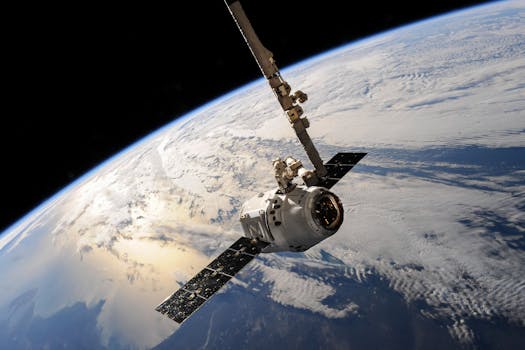
MEO Satellites: Introduction to Medium Earth Orbit Technology
MEO satellites, or Medium Earth Orbit satellites, are a type of satellite that operates in an intermediate orbit between Low Earth Orbit (LEO) and Geostationary Orbit (GEO). This orbit, which ranges from 2,000 to 36,000 kilometers above the Earth’s surface, offers a unique combination of benefits that make MEO satellites ideal for a variety of applications, including global communication, navigation, and Earth observation.
The focus on MEO satellites has increased in recent years, as the demand for faster and more reliable global communication networks continues to grow. MEO satellites are well-positioned to meet this demand, offering a number of advantages over traditional GEO satellites, including lower latency, higher bandwidth, and improved connectivity.
Advantages of MEO Satellites
One of the primary advantages of MEO satellites is their lower latency compared to GEO satellites. Because MEO satellites are closer to the Earth’s surface, signals transmitted to and from these satellites experience less delay, resulting in faster and more responsive communication. This makes MEO satellites particularly well-suited for applications that require real-time communication, such as video conferencing, online gaming, and remote healthcare.
In addition to their lower latency, MEO satellites also offer higher bandwidth than traditional GEO satellites. This is because MEO satellites can reuse frequencies more efficiently, allowing for more concurrent connections and increased data transfer rates. This makes MEO satellites ideal for applications that require high-speed data transfer, such as streaming media, cloud computing, and big data analytics.
Applications of MEO Satellites
MEO satellites have a wide range of applications, including global communication, navigation, and Earth observation. In the realm of global communication, MEO satellites are used to provide broadband internet access to remote and underserved communities, as well as to support mobile networks and provide backup connectivity during outages.
In the field of navigation, MEO satellites are used to provide location information and timing signals, which are essential for a variety of applications, including aviation, maritime, and land transportation. MEO satellites are also used for Earth observation, providing high-resolution images of the Earth’s surface and atmosphere, which are used for weather forecasting, climate monitoring, and natural resource management.
Future of MEO Satellites
The future of MEO satellites looks bright, with a number of new constellations and systems being developed to take advantage of the benefits of medium earth orbit technology. One of the most notable examples is the O3b constellation, which is being developed by Other 3 Billion, a company founded by Google, Liberty Global, and HSBC. The O3b constellation will consist of a network of MEO satellites that will provide high-speed internet access to remote and underserved communities around the world.
Another example is the Amazon Kuiper Systems, which is a constellation of MEO satellites being developed by Amazon to provide broadband internet access to communities around the world. The system will consist of a network of 3,236 satellites that will operate in medium earth orbit, providing high-speed internet access to remote and underserved communities.



